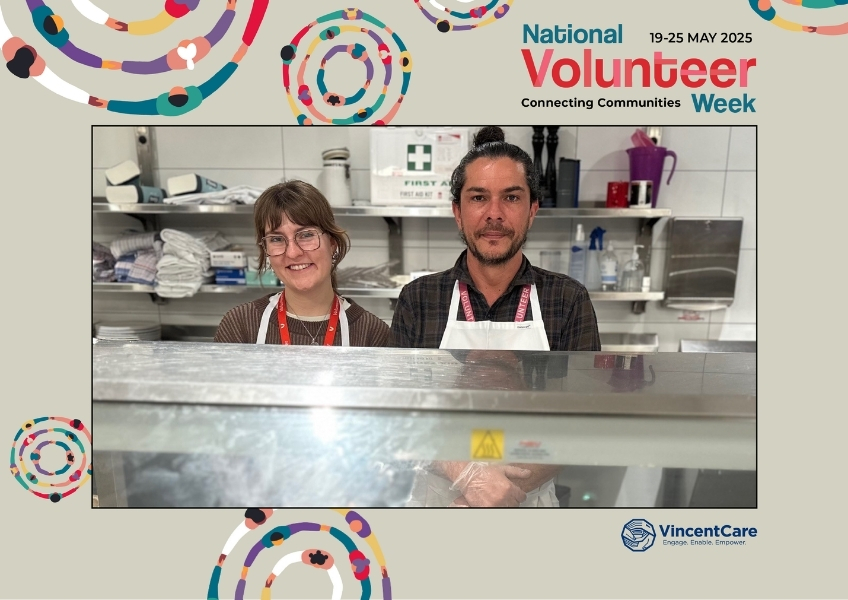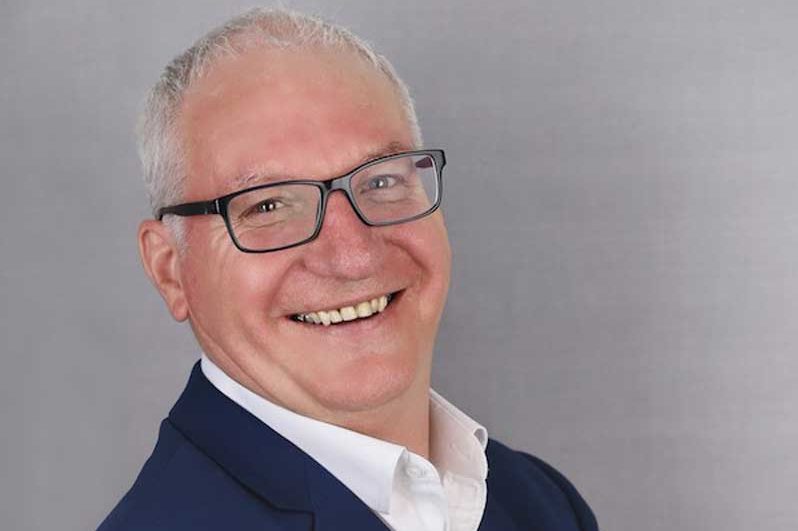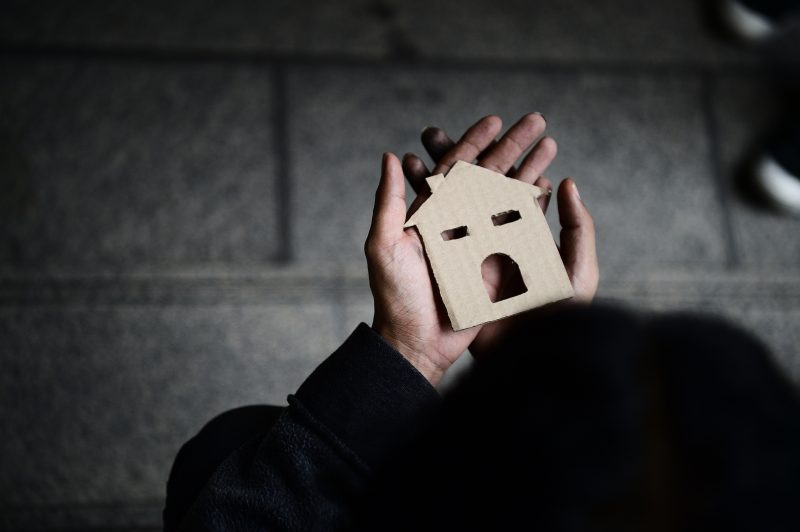
A client-centred approach to homelessness
Written by Quinn Pawson, CEO VincentCare

The breadth of backgrounds and human impact of homelessness, and its accompanying factors and burdens, is something that has both struck and anchored me in my recent appointment as CEO of VincentCare. My experience in the social services and not-for-profit sectors for almost 30 years, including as CEO of UnitingCare’s Prahran Mission, means that I am no stranger to the topic of homelessness. I have particular knowledge on the profound impact that mental ill health can have -as both an exacerbating cause, and as an outcome of being homeless. My first months with VincentCare have coincided with a time of significant activity, as the finishing touches are placed on our world-class, custom-built Homelessness Accommodation Hub and Resource Centre in North Melbourne – Ozanam House. Availing myself of the issues affecting our clients, staff and the broader community has been an immersive experience. I have been able to see the innovative strides being made to improve the delivery of homelessness accommodation and wrap-around care, and hear first-hand the experiences of people experiencing homelessness. From data, observations and discussions, I have been galvanised by the sectors’ belief that housing services need to take a client-centered approach, and that access to affordable housing is imperative.
For those not familiar with the tireless work of staff on the pointy-end of client support, it can be confronting to acknowledge the extent and experiences of homelessness. In the municipality of Melbourne alone, more than 1720 people are experiencing some degree of homelessness requiring support services, while approximately 279 people are sleeping rough on the streets and across Victoria it is nearer 1100. Even more confronting can be the knowledge that through a change in life circumstances, homelessness can affect almost anyone, from any walk-of-life. We might take for granted, that if we were ever experiencing such difficult times that someone would be there to help us. People and services most certainly are here to help, and I have been astounded by the quality of service delivery and outcomes that we are increasingly able to provide. However I have also been given a new appreciation of the social, resourcing and economic barriers to effective support. This has solidified my thoughts about the lack of access to housing that still prevails. With 40% of people experiencing homelessness stating that the primary reason for their homelessness is a ‘lack of housing’, there is a clear need for more affordable housing. This is perhaps seen at its most critical with crisis accommodation and the need for services that ‘break the cycle’ by offering early interventions – before people find themselves permanently entrenched in homelessness.
Homelessness when viewed in isolation may look like an issue unto itself, but it is really much more complex. I have learned that chronic homelessness is entwined with issues such as intergenerational poverty, childhood trauma and abuse, family violence, substance dependency, and mental illness – among a myriad of other factors. It can range from couch-surfing, to sleeping in crisis accommodation, to those accessing longer-term housing support. At the extreme it may include sleeping rough on the streets, without access to basic amenities. Given this diversity of needs and experiences, it makes sense that the solutions and supports that we provide are diverse, and tailored to the needs of individuals.
We will soon be opening the doors to our new Ozanam House Homelessness Accommodation Hub and Resource Centre. Not only is this significant due to the history, size, location and high-level amenity of the new building, but because of the underpinning by a Homelessness to Recovery Model. This will enable clients and staff the best environment and framework to co-author client-centered support – inclusive of holistic, wrap-around services that support physical, mental and social wellbeing. Accommodation options will cater to different stages of homelessness: crisis, intermediate and long-term. This multi-faceted approach represents a core aspect of future direction for homelessness support, particularly in a context where the shortage of affordable housing represents such a major barrier for both clients and support workers. My colleague Doug Harding, who also shares an article in this edition, is well versed on Ozanam House and its potential to transform the lives of thousands of homeless Victorians into the future. I encourage you to read his thoughts.
The hard work and dedication of VincentCare staff – those involved both in the massive undertaking of the Ozanam House redevelopment, and in our day-to-day services and operations, has been a boon for me as a new CEO. I have been able to join a stable and respected organisation, which was deftly lead by my predecessor, John Blewonski, and Dr Jane Daniels, former Deputy CEO. Our challenge now is to ensure that Ozanam House is able to play its part. A potential that I believe will embrace diversity, maximise innovation, embrace individualised support and treatment, and exemplify best practice. A future that will champion the rights, needs and strengths of our clients, and harness the experience of our staff and service and sector partners. Working to aid people from all-walks-of-life through a stabilisation process to an exit from homelessness.
As I mentioned, it is the broad human experience with homelessness that strikes a chord with me. I believe therein lies the focus that will enable funders, policy makers, and service providers to take homelessness support into the future – a human-centered approach. Both heart and head are the essence of our model. The heart is concerned with understanding our clients – what is important to them, and what they need. Co-design, consultation and case managed customisation are some of the keys. This empowers clients to impact their own recovery. The head is concerned with evidence and quality including the improved use of our own data and our translation of international research and best practice, into action.
Looking forward, crisis accommodation and availability of housing are urgent needs. Supporting developments like Ozanam House is a positive step. However without a holistic approach that goes beyond bricks and mortar, we will struggle to overcome barriers and work towards more permanent solutions– both for our individual clients, and the issue of homelessness more broadly. Together with our colleagues from other service providers, and alongside policy makers and funders, we can have a strong collective impact on homelessness. Keeping people in focus for design and delivery – housing innovation and growth lead by hearts and heads – is the key.
Originally published in the March 2019 edition of Parity, the national magazine for Council to Homeless Persons.



